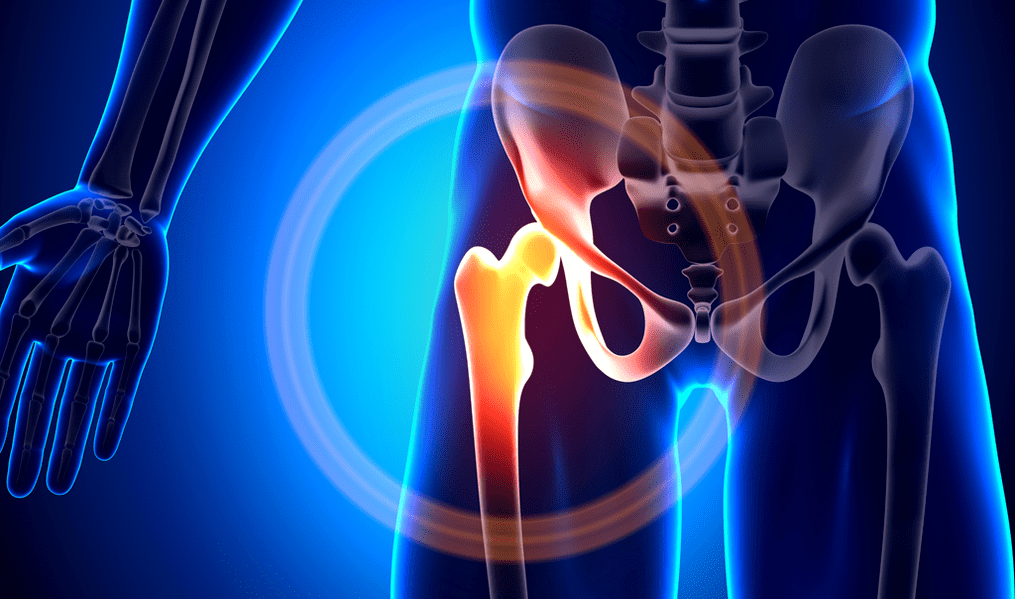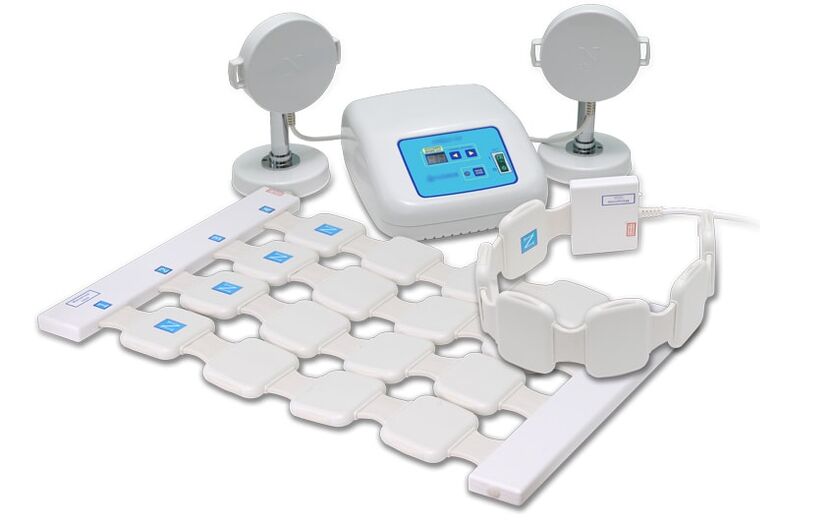Is this disease with a complicated name - coxarthrosis? The disease is a deformed arthrosis of the hip joint and is often also called osteoarthritis of the hip joint.
Currently, coxarthrosis is a leader among diseases of the musculoskeletal system, which are degenerative-dystrophic in nature. There are many reasons that contribute to the occurrence of coxarthrosis, and in connection with this, the disease has spread widely in all age groups.

Coxarthrosis refers to arthrosis of a non-inflammatory nature, in which initially there is a change of degenerative-dystrophic nature in the cartilage of the hip joint, which coats the surface of the articular bone, and at a later stage bone changes have already occurred. directly. In the course of the disease that develops gradually with coxarthrosis, therefore, there is a violation of the natural normal function of the affected hip joint, which eventually leads to a violation of the function of the musculoskeletal system of the sick person as a whole.
For the most part, arthrosis of the hip joint affects people over the age of forty. Of course, coxarthrosis, like other diseases, can be successfully treated without surgery, but only in its early stages. But in the final stages, it is not possible to do without surgical intervention, and only one thing can help to prevent deformity - prosthetics of joints affected by coxarthrosis. Unfortunately, people with coxarthrosis, not paying attention to minor pain in the hip joint in the early stages of the disease, avoid going to the doctor, and osteoarthritis of the hip joint, meanwhile, continues to develop day by day, gradually turning into a more advanced form.
How does coxarthrosis develop?
Let's look at the mechanism of development of coxarthrosis. And let’s start with the fact that the hip joint is made up of two bones:
- the tip of the femur itself, similar to a ball;
- acetabulum, similar to a small billiard pocket, located in the iliac portion of the pelvis;
- special articular cartilage on the surface of both bones, resembling a sponge-like material and required as a shock absorber, compresses during movement and straightens without its presence;
- as well as the ligaments that form the cavity of the hip joint itself and in turn form the joint capsule.
Around the joint, in addition, there is muscle tissue, such as the femoral, gluteal and other muscles, on the function of which the condition of the hip joint also depends.
During movement, when the articular cartilage is compressed, certain fluid is "squeezed" out of it into the joint, which is a kind of lubricant for the articular bones in the joint. Also, the articular cartilage itself, in addition, performs the function of distributing the load evenly on the joint surface, being an excellent shock absorber during movement.
The incidence of the disease with coxarthrosis is mainly due to the fact that the nutrition of the cartilage of the hip joint is disturbed. The cartilage becomes thinner, and subsequently disappears in some places. If no steps are taken to stop this process, then in the places where the cartilage atrophy described above occurs, the bone itself will grow directly, thus trying to "fill" the resulting void in the joint cavity. As a result of such bone changes, therefore, osteophytes, that is, "spikes" on the bone, begin to appear. This defect, in turn, leads to a violation of the fit of the articulating bones in the hip joint and in turn "scratches" the healthy areas that are still present in the articular cartilage.
Causes of osteoarthritis of the hip joint
The causes of coxarthrosis, in which it occurs, can be divided into primary, having an unclear etiology, and secondary, as a result of other diseases, for example, such as:
- hip dislocation, which is congenital;
- hip dysplasia;
- aseptic necrosis of the femoral head itself;
- previously suffered a variety of injuries, such as a femoral neck fracture;
- Perthes disease;
- inflammatory processes in the hip joint;
Since coxarthrosis disease occurs not only in one, but simultaneously in both hip joints, it is quite possible to assert that bilateral coxarthrosis is not uncommon. Even with primary coxarthrosis, often, the knee joint or spine is also affected.
Symptoms of coxarthrosis
The first symptoms of coxarthrosis directly depend on the degree of damage to the hip joint, as well as on the stage of development of the disease, and the main ones are:
- pain which manifests itself during movement, in the hip joint, and disappears during rest;
- emerging malformations;
- stiffness that appears in the hip joint;
- downward progression in hip movement range;
- femoral muscle weakness and a significant decrease in its volume.
Separately, we consider the symptoms of coxarthrosis, depending on the stage of the disease with the disease:
- Symptoms of the first stage of coxarthrosis: at the hip joint there is pain of a moderate nature, and only after the joint has undergone a strong load for a long time. After removing the load and rest, the syndrome is completely stopped. With the first stage of coxarthrosis symptoms, gait remains normal and the range of joint movement does not change.
- Symptoms of stage 2 coxarthrosis: pain in the hip joint is already felt more intense than in the first stage, but in addition, they are projected to the inguinal area. As muscle atrophy develops, the knee also begins to ache, and more often than the ilio-femoral joint itself. Sometimes, with the symptoms of second-degree coxarthrosis, pain begins to appear even at rest, and after the load is transferred to the affected joint, a relatively long rest is already required to relieve it. Lameness begins to appear when running or walking for a long time. At the same time, the strength of the thigh muscles is somewhat reduced, and the range of motion of the joint is also underestimated.
- Symptoms of stage 3 coxarthrosis: persistent pain in the hip joint, which does not disappear even after a very long rest or persistent rest, even at night. The pain has affected the entire leg. Against the background of pain, patients experience insomnia and various sleep disorders. There is a strong atrophy of the muscles of the thighs, buttocks and lower legs, while the number of joint motors is almost minimal. When walking, sick people have to use assistive devices, such as, for example, crutches, to move.
If the arthrosis of the hip joint only develops in the hip joint of one leg, then the weak femoral muscle gives impetus to the development of lateral pelvic displacement, as a result of which the length of the leg with the joint affected by coxarthrosis decreases.
Diagnosis of coxarthrosis
When diagnosing coxarthrosis, the symptoms of coxarthrosis described above must be taken into account in combination with data obtained from x-ray examination of the patient. This technique provides an opportunity to determine not only the degree of coxarthrosis, but to identify the causes that serve as catalysts for the development of coxarthrosis. Radiographs provide an excellent opportunity to determine changes that specifically cause injury to the hip joint, which are directly related to the mechanism of development of coxarthrosis.
In addition to the diagnostic methods already listed, computed tomography methods and magnetic resonance imaging can also be used, providing an opportunity for a comprehensive detailed study of pathological development, such as, for example, bone tissue structure, its deformation. is the companion of this disease. With respect to magnetic resonance imaging, this method still allows the assessment of pathological disorders that have passed by the soft tissues around the joints affected by coxarthrosis.
Treatment of coxarthrosis
Treatment options for coxarthrosis directly depend on the symptoms of coxarthrosis and its stage. Typically, with first and second stages of coxarthrosis, traditional conservative drug therapy is carried out, which consists of taking chondroprotectors, vasodilators and, if indicated, also muscle relaxants. In periods of time when coxarthrosis is very acute, nonsteroidal anti-inflammatory drugs are also used. It should be borne in mind that such treatment must be carried out by a specialist doctor, because the drugs themselves, unlike traditional medicine, can have a very negative effect on the internal organs of the patient and completely suppress the ability to restore hyaline cartilage.

Also, in the case of coxarthrosis, various physiotherapeutic procedures and exercise therapy are prescribed. Particularly effective, in combination with traditional medicine treatment of coxarthrosis, is the use of magnetotherapy in the treatment of arthrosis using special devices.
Effects on the body of patients with coxarthrosis with diet has no direct therapeutic effect, but is recommended for obese people to lose weight, as it makes it possible to reduce the load on the affected joints, thereby reducing the acute symptoms of coxarthrosis.
For the third stage of the disease with coxarthrosis, the most painful symptom, treatment, as it were, is performed only through surgical intervention, for example, hip arthroplasty. Statistical data show that after surgery, absolute restoration of limb function with deformed arthrosis of the hip joint is achieved in 95% of cases, which makes it possible to later lead a fairly active lifestyle.
The service life of such a prosthesis is about 15-20 years, but at the end of its service life, a second operation is required to replace the worn endoprosthesis.
Notes,it's important! Don't diagnose yourself!If symptoms of coxarthrosis appear, you should consult an orthopedic doctor, as only a qualified specialist can make a correct diagnosis and prescribe the most optimal treatment.
Prevention of coxarthrosis
Coxarthrosis can be prevented if the necessary prevention of coxarthrosis is carried out:
- mandatory and timely treatment of inflammatory joint diseases;
- timely treatment of joint dysplasia;
- proper and reasonable physical activity is mandatory, especially exercise with weights, which must be carried out properly;
- mandatory control of your weight, keeping it within the norm;
- joint injury prevention.































